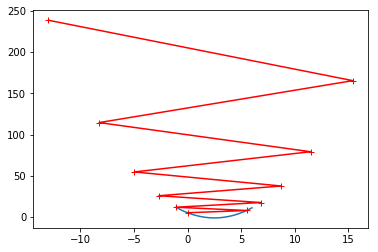Simulation Gradient Descent
April 3, 2019
梯度下降法模拟
import numpy as np
import matplotlib.pyplot as plt
plot_x = np.linspace(-1, 6, 141)
# 损失函数
plot_y = (plot_x - 2.5) ** 2 - 1
plt.plot(plot_x, plot_y)
plt.show()
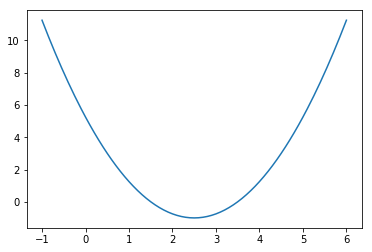
# 对上述损失函数某点求导数
def dJ(theta):
return 2 * (theta - 2.5)
# 求损失函数的值
def J(theta):
try:
return (theta - 2.5) ** 2 - 1
except:
return float('inf')
theta = 0.0
epsilon = 1e-8
eta = 0.1
while True:
gradient = dJ(theta)
last_theta = theta
theta = theta - eta * gradient
if(abs(J(theta) - J(last_theta)) < epsilon):
break
print(theta)
print(J(theta))
2.499891109642585 -0.99999998814289
theta = 0.0
theta_history = [theta]
while True:
gradient = dJ(theta)
last_theta = theta
theta = theta - eta * gradient
theta_history.append(theta)
if(abs(J(theta) - J(last_theta)) < epsilon):
break
plt.plot(plot_x, J(plot_x))
plt.plot(np.array(theta_history), J(np.array(theta_history)), color='r', marker='+')
plt.show()
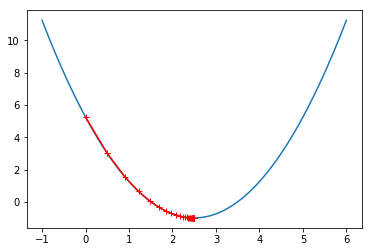
len(theta_history)
46
def gradient_descent(initial_theta, eta, n_iters=10000, epsilon=1e-8):
theta = initial_theta
theta_history.append(initial_theta)
i_iter = 0
while i_iter < n_iters:
gradient = dJ(theta)
last_theta = theta
theta = theta - eta * gradient
theta_history.append(theta)
i_iter = i_iter + 1
if(abs(J(theta) - J(last_theta)) < epsilon):
break
def plot_theta_history():
plt.plot(plot_x, J(plot_x))
plt.plot(np.array(theta_history), J(np.array(theta_history)), color='r', marker='+')
plt.show()
eta = 0.01
theta_history = []
gradient_descent(0., eta)
plot_theta_history()
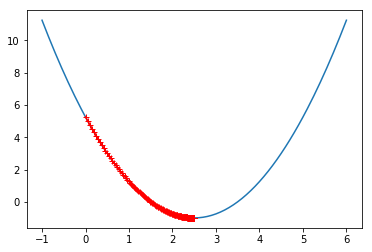
len(theta_history)
424
eta = 0.001
theta_history = []
gradient_descent(0., eta)
plot_theta_history()
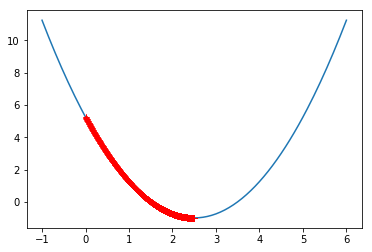
len(theta_history)
3682
eta = 0.8
theta_history = []
gradient_descent(0., eta)
plot_theta_history()
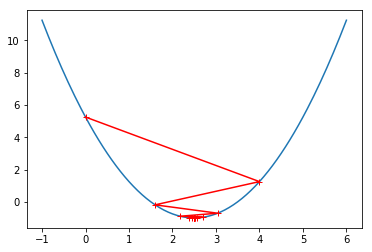
len(theta_history)
22
eta = 1.1
theta_history = []
gradient_descent(0., eta)
len(theta_history)
10001
theta_history[-1]
nan
eta = 1.1
theta_history = []
gradient_descent(0., eta, n_iters=10)
plot_theta_history()
